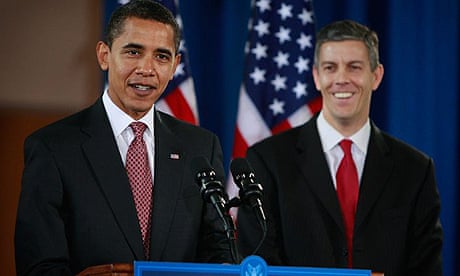- For example, Jackie Krowen borrowed $128,000 to attend three colleges. She now owes $152,000 and is making loan payments of $1200 a month. She told Consumer Reports she didn't understand how much interest could accrue when she took out her loans.
- Jessie Suren borrowed $72,000 to attend a private Catholic school. She now owes $90,000 and makes payments of $900 a month. She works at a sales job that pays $39,000 a year. Here entire income comes from commissions.
- Saul Newton borrowed $10,000 to attend University of Wisconsin at Stevens Point. He dropped out to join the Army and now owes $23,000. He works as a veterans' activist making $28,800 a year.
Anyone making college plans should read the Consumers Reports story. Nevertheless, the article missed an opportunity to give potential students several dire warnings:
1) First, do not attend a for-profit college. The research shows that for-profit colleges charge more for their programs than public institutions, that their student-loan default rates are shockingly high, and that a high percentage of their students don't complete their programs. Students should find a public-college alternative to a for-profit college education. I don't think there are any exceptions to this rule.
2) Never allow a parent or loved one to co-sign a loan. Parents who co-sign student loans for their children are on the hook to pay those loans back, and it is as difficult for a co-signer to discharge a student loan in bankruptcy as it is for the primary borrower. If your college plans depends on getting a loved one to co-sign your student loans, then you need a different plan.
3) Don't take out a student loan from a private lender. Private loans generally have higher interest rates than federal loans, and private loans don't have alternative payment plans if a borrower gets in financial trouble and can't make monthly loan payments. Again, if your college plan requires you to take out a private loan, you need to make another plan.
4) Don't borrow a lot of money to obtain a liberal arts degree from a high-priced elite college. People foolishly think a degree from a prestigious university will pay off, no matter what major they choose. That is not true. A person who borrows $100,000 to get a religious studies degree from NYU will regret it.
5) Don't borrow money to get an MBA or law degree from a mediocre school, particularly if you know you are not going to graduate in the top of your class. Anyone contemplating law school should read Paul Campos' book titled Don't Go to Law School(Unless). Campos strongly warns against borrowing money to attend a second- or third-tier law school. It just doesn't make economic sense given the dismal job market for lawyers, particularly if you don't graduate in the top of your class. In my opinion, the same advice holds for MBA programs. Borrowing a lot of money to get an MBA from a nondescript university is unlikely to pay off financially.
In his book, Paul Campos also warned against the "Special Snowflake Syndrome"--the irrational belief that you can beat the odds. For example, you may think you will study especially hard and graduate in the top 10 percent of your class. But Campos points out that 90 percent of law students don't graduate in the top 10 percent of their class.
Alternatively, you may think you are a special person with great interpersonal skills and that you will do well in a law career even if you graduate at the bottom of your class from a mediocre law school. But statistics don't lie; most people who borrow $150,000 to attend Nowhereville School of Law aren't going to earn a salary that will make that investment pay off.
Campos' advice for prospective law students applies to everyone going to college. Do your research and make an informed decision about where to go to school and what to study. Don't assume the world will be your oyster simply because you have a bachelor's degree in multiculturalism from a hot-shot Eastern college.
In summary, you should read the recent Consumer Reports story if you are making plans to go to college. But you should also heed the warnings in this blog. Millions of people made bad decisions about financing their college educations. Five million are now in long-term income-based repayment plans that stretch their monthly loan payments out for 20 and even 25 years.
You want to improve your life by going to college; you don't want to wind up as a sharecropper--paying a percentage of your income to the government for the majority of your working life just because you made some bad financial decisions when you were a college freshman.
References
Paul Campos. (2012). Don't Go to College (Unless). Lexington, KY).
Lives on Hold. Consumer Reports, August 2016, 29-39. Accessible at http://www.consumerreports.org/student-loan-debt-crisis/lives-on-hold/











